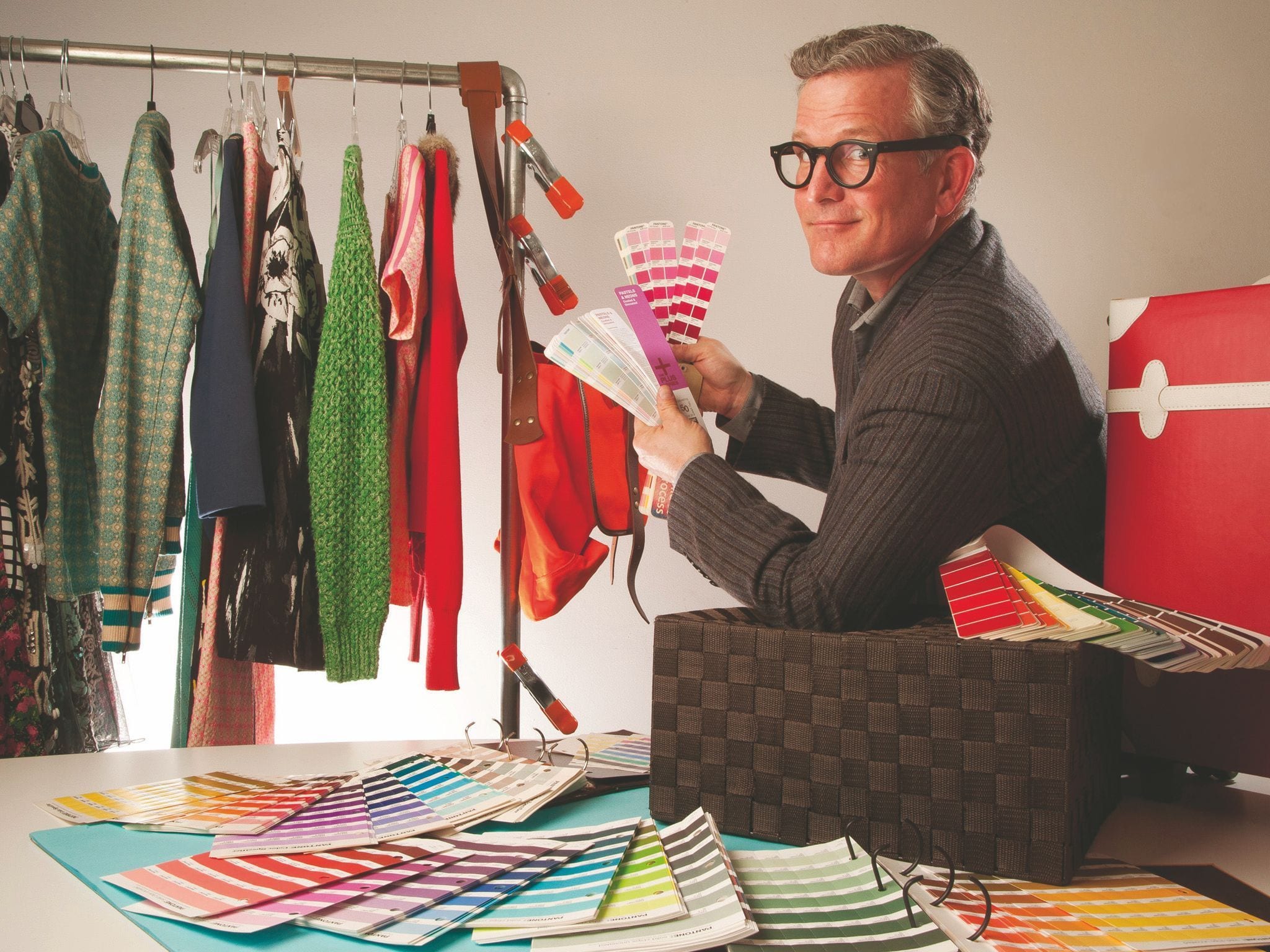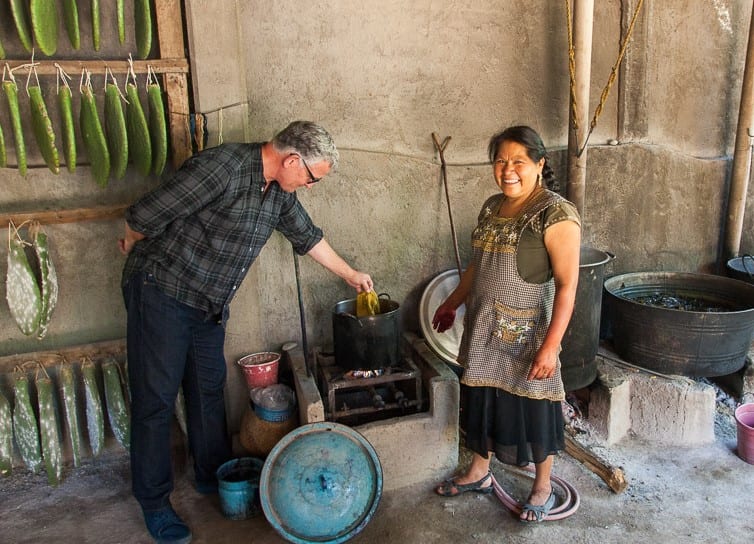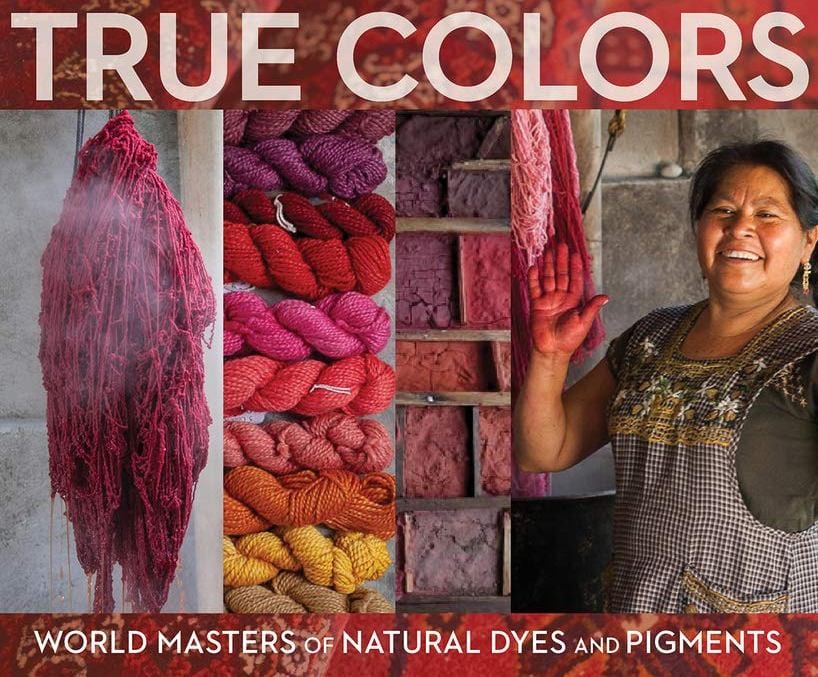
The Little Green Dress - Cut From a Different Cloth
by Natalie Bencivenga
September 1, 2020
Keith Recker, co-owner and editor-in-chief of TABLE Magazine, is letting his true colors shine through when it comes to his approach to sustainable fabric. He doesn’t just see pigments that create the garments we wear. He sees stories, backgrounds, communities. He sees the environmental hazards of what happens when people are unaware of the toxic and wasteful ways in which conventional fabric is created and dyed. But most importantly, he sees how the natural world is the solution.
In his book, True Colors: World Masters of Natural Dyes and Pigments, now in its second edition, he explores the relationship we have to the cornucopia of colors that make up what we wear and why.
“My real exploration of handmade, artisan products started 30 years ago. I learned a lot from Clare Brett Smith who was the head of Aid to Artisans. She generously involved me in the work of the organization and it totally changed my life,” he recalled.
His journey took him to Mozambique and Tanzania as he began looking at the ways in which people created colors and pigments that were not only sustainable but told the stories of their cultures and heritages.
In 2004, he found himself predicting trends and color forecasting for Pantone and WGSN, a global authority on consumer and design trends, which led to his “total fixation on color.”
“I wanted to provide an entry point to the idea that products can do good. All of these interests led to organic research into color,” he said. He wondered how to encourage practices and create products so satisfying and interesting with such incredible backstories that wasteful, poor quality garments that harm people and the environment would be a thing of the past.
Recker became so inspired that he began the HAND/EYE Fund in 2010 which spearheaded projects in Haiti.

“I have a background in both nonprofits and retail, along with being a triple major in the fields of creative writing, professional writing and French from Carnegie Mellon University, so being encouraged to bring all of these passions into artisan building development was very powerful for me,” he added.
These experiences led to a deeper appreciation for the art and craft of dying materials. “It is amazing what you learn when you have the chance to be with people and experience it. I found myself at one point in Macedonia on a mountaintop working with 40 crochet makers, learning more about them, their place in the world and their culture,” he said.
After a series of immersive experiences with people from all over the world, he recognized that he wanted to share his passion, compiling this newfound knowledge into a book that would expand the minds of others around their understanding of the history of color.
“I go deep into the stories of 26 artists and artisans who use natural colors in their work. I share stories from 13 countries, including the United States. Some are super traditional in their practices while others are contemporary in their approach to influencing the fashion industry, hoping to pull it away from petrochemical consumption,” said Recker.
He covers the full spectrum, launching into the study of not just black and white but violet, blue, red, orange, yellow, before ending on his favorite color—green. The book shares communities preserving cultural and environmentally relevant ancient practices related to fabrics and dyes.
One story focuses on a group off the coast of Oaxaca in southwestern Mexico who venture out during low tide to pluck snails from the rocks.
“They startle the snail and it emits a neurotoxin. When this is applied to cotton yarn, it oxidizes in the air from a yellowish-green color to a blue and finally a red-violet. It’s such a super interesting process that has been passed down for 1500 years,” he said.
After the toxin is collected, the snail is returned alive and unharmed to its place on the rock. But Recker warns this practice could be ending soon due to people not respecting this ecosystem. “We are overfishing and people are selling this snail as a part of seviche. More education is needed to help preserve this practice,” he added.
He also sheds some light on the origin of synthetic dyes to help us more fully understand how we got here to this unsustainable, unhealthy place in the fashion industry.

“It was an accident,” he said. In 1856, a teenage chemist in England was working to transform coal tar as a substitute for quinine. While he didn’t manage to do that, he realized his rags changed a brilliant color of purple. The rest is history.
“Everything then became about the industry being built on producing color within this modern manufacturing model. It was cheap and uniform. The more they cut prices at the front, the more margin was left at the end for profit. This was the strategy that led us to where we are now, filling landfills with synthetically dyed clothing poisoning our water and air, hurting people and environments.”
The book also explores the colorful properties of hibiscus, coconuts, onion skins, avocado pits… the bounty of the Earth provides a multitude of ways to creatively dye our clothing if we just take another look at what we have around us.
He wants the fashion industry to cut from a different cloth moving forward and hopes that people become inspired to demand more from their clothes and the companies creating them. “We could be replenishing the land using these plants and fruits and vegetables to make garments that we would never discard into the rag pile,” he added.
With more than 80% of clothing ending up in landfills each year, the time to act is now. “If we buy garbage, we treat it like garbage,” said Recker. “But if we buy things with history and stories and people attached to them, we can do good by the earth and do good for one another,” he added.
Recker also believes that garments connect us to our greater humanity, as we recognize the importance of celebrating differences, of the beauty in imperfections.
“This brings us together. They are us and we are them,” he said.
When we begin to see ourselves reflected in each other, in the many and beautiful ways in which we live, in the differences that excite our senses and unite us through that enthusiasm for Mother Earth, only then can we really begin to see our true colors of connection to one another shine through.

Leave A Comment